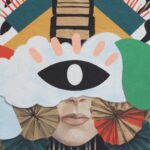
This paper starts off with a precise aim: to assess the positive impact that arts on prescription services have on participants’ moods. It then takes an ambitious leap to posit that these creative practices can “predict global wellbeing change” (Holt, 2020).
The background of this study is an advocation of the merits of arts on prescription services. Arts on prescription is a form of social prescribing, which evidence states can improve wellbeing and reduce the financial burden on the NHS (Sumner, Crone & Baker, 2019). This happens when people who participate in arts on prescription groups feel an improvement in their mental health, their community wellbeing, and their social inclusion. When 1 in 5 visits to the GP are for social reasons (not medical), arts on prescription can reduce the burden of patient care and reduce GPs’ visits (Bickerdike et al., 2017).
There are a few previous Elf blogs that assess social prescribing and arts on prescription (Tsoli & Katsampa, 2019; Aughterson 2019; Northfield, 2013 stand out). These practices have “compelling” potential, which has yet to saturate healthcare settings sufficiently (Tsoli & Katsampa, 2019).
The aim of this paper is to present a novel vision of arts on prescription, by using an “experience sampling method”, which tracks reports of momentary wellbeing over the course of particular arts on prescription programmes (Holt, 2020). The focus is to evaluate how particular dimensions of mood are affected by the art-making process, how these change over time, and whether this change can predict longer changes in wellbeing. This study uses mood tracking as a novel evaluation tool to assess and infer larger mechanisms of change. There is a jump, from assessing arts on prescription participants’ wellbeing, to global wellbeing scales. The author is interested in both immediate and global aspects of wellbeing (assessed via the variance of mood).
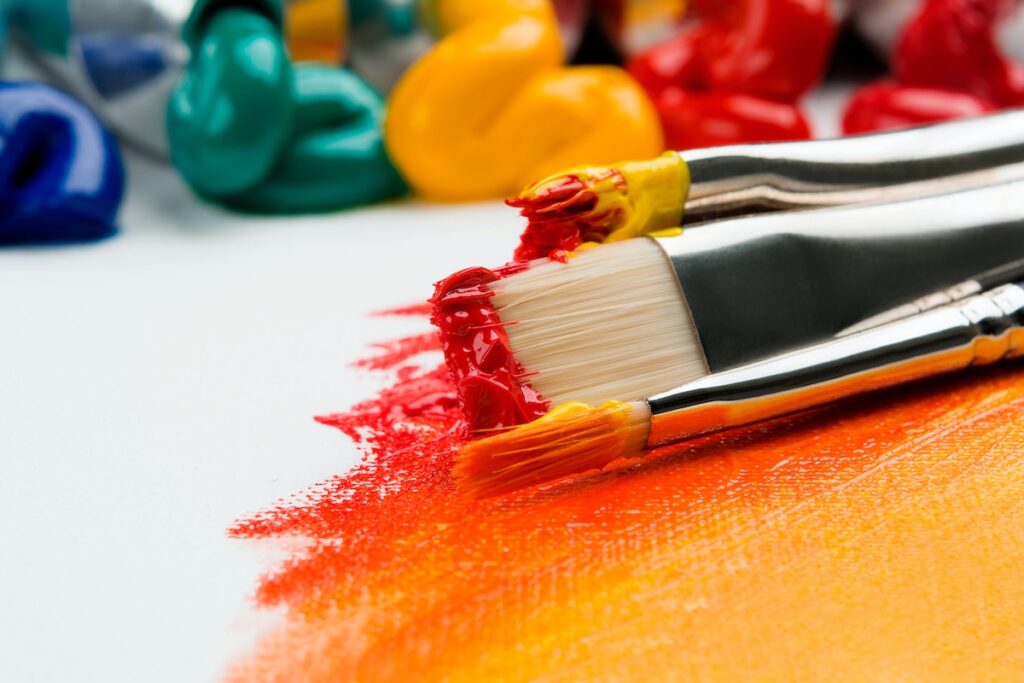
Holt (2020) aimed to present a novel vision of arts on prescription, by using an “experience sampling method”, which tracks reports of momentary wellbeing over the course of particular arts on prescription programmes.
Methods
This project began with three hypotheses, which were assessed and tested in the consequent research:
- Global wellbeing scores would increase over the course of the art programmes, replicating previous findings;
- Immediate measures of mood (calmness, alertness and contentment) would increase after taking part in each art workshop;
- Mood would improve over the course of the art programmes and would predict improvements in global wellbeing.
Data was collected from 3 arts on prescription groups over a 2-year period, delivered by two artists. 66 people participated in the study; of those 58 were female, aged 25-75, while a high proportion identified as ‘White British’ and were referred mostly with anxiety and depression.
The design of the study was based around measuring mood and wellbeing scores. The evaluation drew upon the experience sampling method, asking participants to complete a six-item mood questionnaire at the beginning and end of each workshop in a 12-week long arts on prescription programme. Participants also completed a measure of global wellbeing at the beginning and end of the programme.
The study assessed both immediate and global measurements of participants’ mood and wellbeing. The Short Mood Scale was used to assess the immediacy of individuals’ mood change, measuring hedonic tone (feeling happy and cheerful rather than sad or depressed); tense arousal (feeling anxious, tense and stressed rather than relaxed or calm); and energetic arousal (feeling active and energetic rather than sleepy and sluggish). The Warwick Edinburgh Mental Wellbeing Scale was used to examine the change of mood over time. During 12 weekly art workshops, participants made art, explored new artistic skills, and took part in continued evaluation.
Results
The results showed that each of the 3 hypotheses were correct. Multi-level modelling was used to test each hypothesis since the data was hierarchical (with 1,491 mood reports nested within 66 participants). Data showed a significant increase in global wellbeing across participants in the arts on prescription programme.
The research shows that after each art workshop, participants showed a significant increase on all dimensions of mood, particularly hedonic tone (contentment); tense arousal (calmness); and energetic arousal (alertness). There was also a significant increase in these dimensions of mood, over time, upon arrival at the art workshops each week. Tense arousal was also reduced after art workshops, which it is argued significantly predicted changes in global wellbeing.
The arts on prescription workshops make a significant impact on participants’ mood and their sense of wellbeing: immediate, subjective and global. The final hypothesis on the reduction in tense arousal was partially met, since there was an increase in global wellbeing scores over time, but only for participants who reported a large reduction of tense arousal after the workshops. Participants reported shifting to a positive mood after art-making, with longer-term wellbeing, but only when they also reported feeling much less nervous, anxious or stressed.
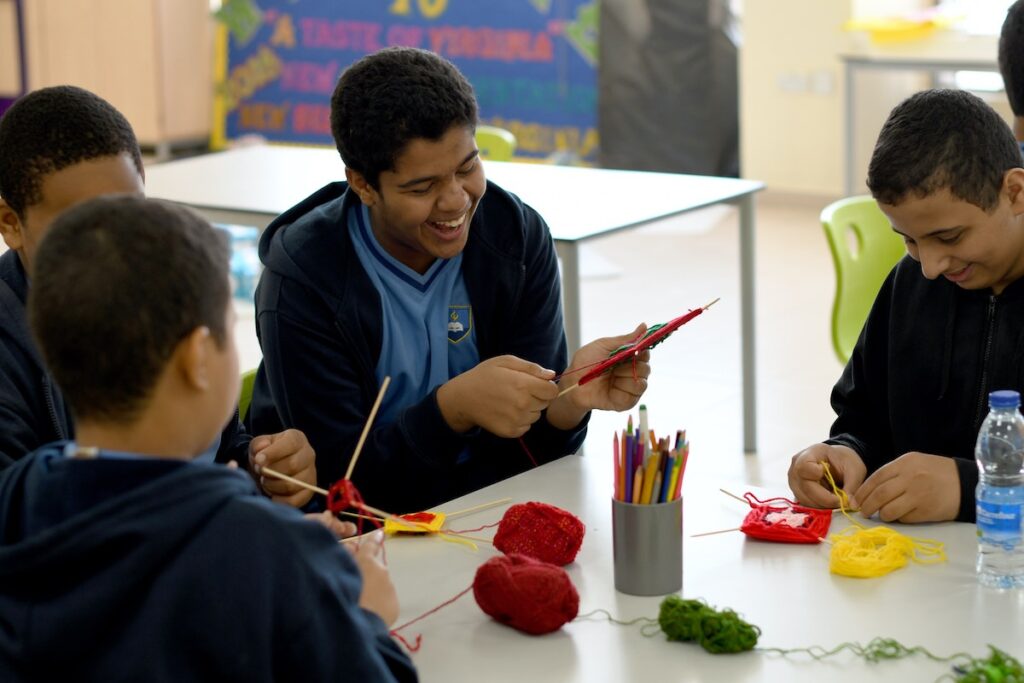
The results of the study suggest that the arts on prescription workshops make a significant impact on participants’ mood and their sense of wellbeing: immediate, subjective and global.
Conclusions
This research shows that reducing tense arousal (feeling nervous, anxious and stressed) plays a large part in the value and impact of arts on prescription services. This paper makes a direct link between experiences during art workshops and changes in global wellbeing. Holt (2020) highlights the applicability of tracking mood and experience for the evaluation of arts on prescription intervention and suggests that it can be a useful tool.
These findings add to existing research about the increase of wellbeing opened by arts on prescription services (Fancourt 2019; Fancourt & Finn, 2019), while it also strengthens the evidence base for arts on prescription.
This research demonstrates and crystallises the immediate positive impact of art-making on mood and wellbeing. One aspect of the findings shows that participants who reported a larger increase in relaxation and calmness after the art workshops had a larger increase in wellbeing across the arts on referral programmes. Increases in feelings of wakefulness and contentment did not have this effect.
The conclusion rests with two points: demonstrating how arts on prescription programmes can improve the wellbeing of people referred for anxiety, depression and social isolation; and the use of mood tracking component of the experience sampling method, which can evaluate public health interventions, by opening processes of change.
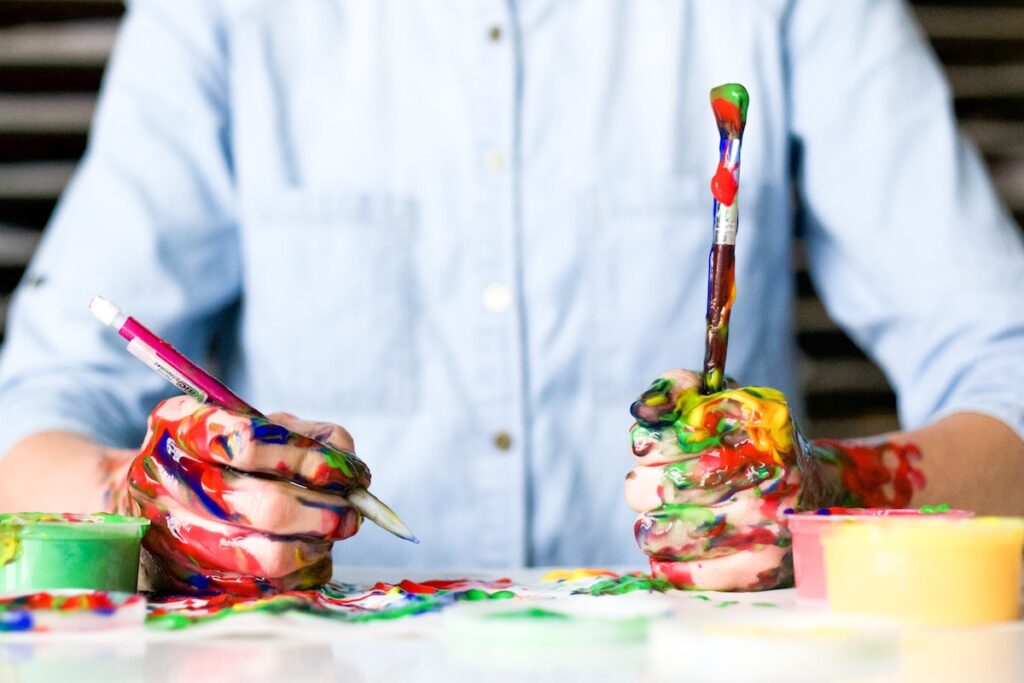
This research suggests that arts on prescription programmes can improve the wellbeing of people referred for anxiety, depression and social isolation.
Strengths and limitations
This is an encouraging piece of research, which confirms what is already known; that making art can have a profoundly positive impact on people’s lives. The paper opens a nuanced position about where arts on prescription can have this affect, by assessing how moods can immediately change as a direct consequence of engaging with creative activity.
It is not established which factors are required to maintain these increases in wellbeing, after the arts on prescription sessions finish. Focusing entirely on mood is a limitation, as there are additional aspects to wellbeing. Also, other factors could be influencing participants’ wellbeing or mood, not just the art (e.g. exercise, nutrition, the weather, hormonal changes, sleep, the environment). How can these factors be taken into account? Additionally, the study included mainly females and a White population. How can the results be generalisable if they don’t include men, gender diverse, trans, non-binary people or ethnic minorities?
This paper takes an ambitious leap to posit that creative practices can “predict global wellbeing change” (Holt, 2020). Whether this “global” change refers to one self-perceived in each participant, or a larger, worldwide change of wellbeing, is not stated.

How can the results be generalisable if they don’t include men, gender diverse, trans, non-binary people or other minorities?
Implications for practice
I am left feeling inspired to call for changes in practice. In a way, we knew the results of this piece of research before it had already begun (see Daisy Fancourt’s BBC video for the facts about arts on prescription). It is important to consider how and when to apply and expand these results, in a practical guide to effect global wellbeing change. We clearly need to make a project to increase arts on prescription in the NHS and local communities of arts in health practitioners (such as the MARCH Network and the Arts Health Early Career Research Network). A German philosopher and visionary, Herbert Marcuse, once said: “Art cannot change the world, but it can contribute to changing the consciousness and drives of the men and women who could change the world” (Marcuse, 1978: 32-33). This is our precedence, our duty.
Now, we need a larger study, which includes participants from Black, Asian and Minority Ethnic groups, different genders, age groups and diagnoses (not just anxiety and depression), or no diagnosis, just people. We need to open up arts on prescription practice pockets in local communities, hospitals, town halls, schools, rural, towns, out-of-reach settings. We know that art can make a profound difference to people’s lives. Let’s initiate this practice. Then we can effect global change.
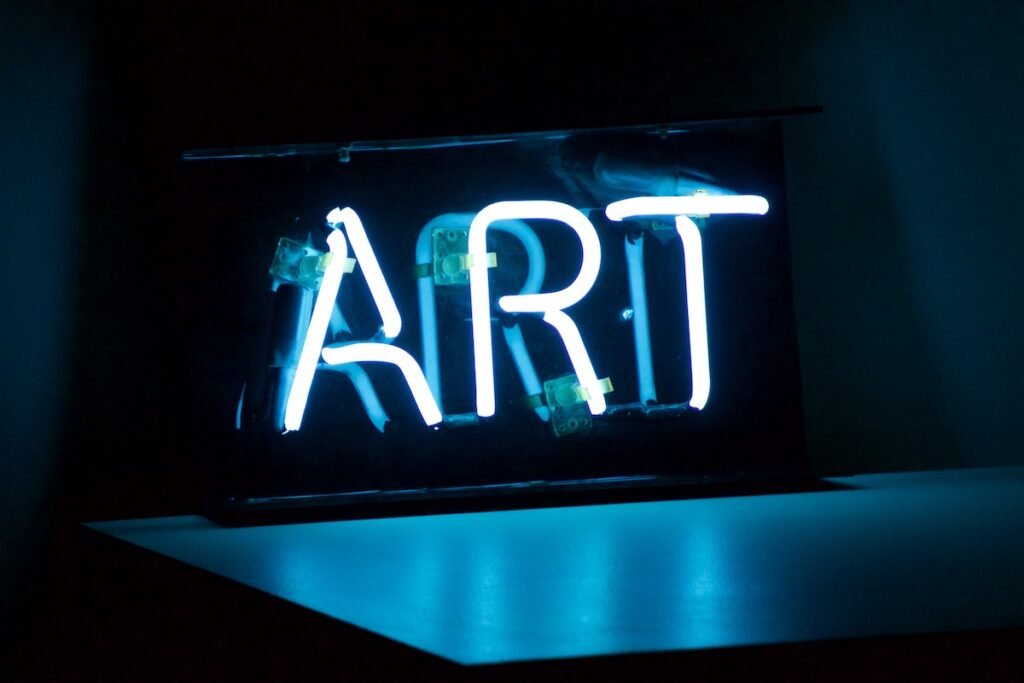
We know that art can make a profound difference to people’s lives. Let’s initiate this practice and then we can effect global change.
Statement of interests
None.
Links
Primary paper
Holt, N. (2020) ‘Tracking momentary experience in the evaluation of arts-on-prescription services: using mood changes during art workshops to predict global wellbeing change’, Perspectives in Public Health, 140, 5: 270-276.
Other references
Aughterson, H. (2019) ‘Can arts engagement improve wellbeing for older adults?’ National Elf Service. https://www.nationalelfservice.net/treatment/complementary-and-alternative/arts-engagement-improve-wellbeing-for-older-adults/
Bickerdike L, Booth A, Wilson P, et al (2017) Social prescribing: less rhetoric and more reality. A systematic review of the evidence. BMJ open 2017; 7(4): e013384.
Fancourt, D. (2019) ‘The role of the arts within health’ BMJ Opinion.
Fancourt, D. (2018) ‘Arts should be available on prescription’, BBC video.
Fancourt, F. & S. Finn (2019) ‘What is the evidence on the role of the arts in improving health and well-being? A scoping review.’, WHO Report.
Marcuse, H. (1978) The Aesthetic Dimension: Toward A Critique Of Marxist Aesthetic, Boston: Beacon Press, 1978: 32-33.
Northfield, N. (2013) ‘Arts group for young people with learning disabilities provides benefits for those involved and wider community’. National Elf Service.
Sumner R, Crone D, Baker C. et al (2020) ‘Factors associated with attendance, engagement and wellbeing change in an arts on prescription intervention’. J Public Health.
Tsoli, H. & D. Katsampa (2019) ‘Social prescribing: we’re doing it more and more, but is there evidence that it works?’ National Elf Service.
Photo credits
- Photo by Mr TT on Unsplash
- Photo by Anna Kolosyuk on Unsplash
- Photo by Atikah Akhtar on Unsplash
- Photo by Alice Dietrich on Unsplash
- Photo by Sharosh Rajasekher on Unsplash
- Photo by Ian Williams on Unsplash
